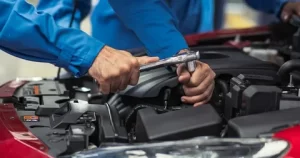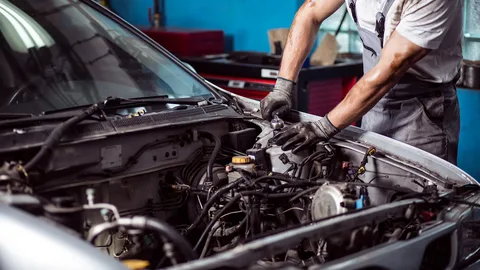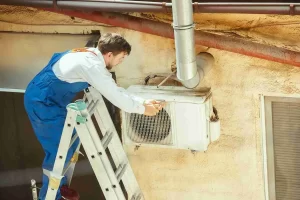When it comes to workspaces in the automotive industry, good air circulation is not merely an amenity—it is mandatory. Automobile exhaust releases all sorts of dangerous gases, including carbon monoxide, nitrogen oxides, and hydrocarbons. In the absence of proper exhaust venting, these contaminants can build up very quickly, causing major health and occupational hazard threats to employees and clients alike. Knowing the function, categories, and upkeep requirements for such systems is essential for anyone running or owning an auto garage.
The Importance of Car Exhaust Ventilation
The fundamental job of an exhaust ventilation system is capturing and evacuating noxious fumes produced in the process of running the vehicle or conducting tests. Vehicles give off fumes that, if not vented, will contaminate a garage or service bay with hazardous gases. With prolonged low-level exposure, respiratory issues, fatigue, and in extreme cases, carbon monoxide poisoning may result.
At locations such as engine shops where engines are routinely tested or vehicles are idled inside, an exhaust ventilation system in the shop isn’t merely desirable—regulatory requirements mandate it. Such systems maintain compliance as well as enhance indoor cleanliness, employee comfort, and total shop productivity.
Types of Exhaust Ventilation Systems
There are multiple types of systems that can serve the distinctive requirements of diverse automotive facilities:
- Overhead Hose Reels: They enable hoses to be pulled down from the ceiling and attached directly into the tailpipe of an automobile. The hose goes back up when not being used, leaving the work area tidy.
- Underground Exhaust Systems: They’re placed below the shop floor and consist of pipes leading fumes outdoors. They’re very efficient and need proper planning and installation.
- Portable Exhaust Systems: Suitable for small, interim installations, these units can be relocated as necessary. Although not as powerful, they still offer some level of protection.
- Rail Systems: For use in the shops that repair multiple vehicles simultaneously, these systems consist of a track for the exhaust hose that slides along the length of the vehicle.

Car Exhaust Ventilation
Advantages of Having a Shop Exhaust Ventilation System
Installing a quality system provides many benefits:
- Health & Safety: Minimizes exposure to hazardous gases.
- Compliance: Adheres to OSHA and other regulatory standards.
- Efficiency: Enhances the working conditions and the work performance of employees.
- Cleanliness: Decreases grime and residue from residual exhaust.
For companies doing business for the longer term, investment in efficient auto shop ventilation systems is an astute and imperative move.
How to Maintain Your Auto Shop Ventilation Systems
Like any mechanical system, shop exhaust ventilation systems require regular upkeep to function efficiently:
- Regular Inspection: Check for obstructions, cracks, or deterioration in hoses and ductwork.
- Clean Components: They can become clogged with dirt, decreasing efficiency in the long term.
- Test Airflow: Verify the system is properly removing fumes from the work area.
- Verify Connections: Ensure that all seals and fittings are secure in order to prevent leaks.
- Schedule Professional Servicing: Have the annual servicing and testing performed by a technician.
Ignoring regular care may undermine the efficiency of your exhaust system and even result in costly repairs later on. Preventative care makes sure that your auto shop ventilation systems remain dependable for the years ahead.
Selecting the Most Suitable System for Your Shop
The choice of setup depends on many things:
- Shop Size: Larger areas might need multiple systems or centralized systems.
- Vehicle Volume: Increased traffic translates into greater demands on the system.
- Layout: Think about how the cars flow through the area and where the points of emissions occur.
- Budget: Balance upfront expenses versus longer-term value and operating cost savings.
Several manufacturers provide customized solutions that can be tailored to specific requirements, making it simpler than ever before to design the system that suits your business.
Conclusion
A safe and efficient auto repair shop depends on a well-planned and well-maintained exhaust ventilation system. Whether you’re building an all-new garage or retrofitting an existing one, knowing your possibilities is important. From straightforward portable configurations to built-in underground installations, today’s shop exhaust ventilation system options are both versatile and efficient.
Don’t neglect the value of routine checks and upkeep. Properly maintaining your auto shop ventilation systems doesn’t just help safeguard your employees—it keeps your business running efficiently, too. Clean air is not a nicety in an automotive setting; it’s an imperative.






